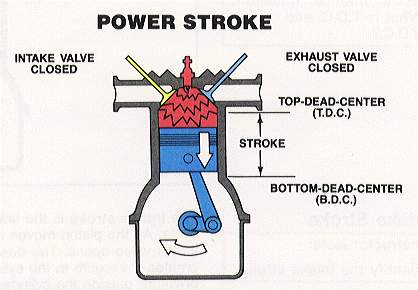

The moving components of the petrol engine are piston, connecting rod, crank and crankshaft, intake and exhaust valves, etc.

The stationary components of the petrol engine are the cylinder, cylinder head, crankcase, intake and exhaust manifold, spark plug, etc. The 4 stroke petrol engine consists of stationary as well as moving components. In this process, a spark plug produces a spark, to ignite the fresh charge (Air + Fuel) which causes the pressure inside the combustion chamber to raise from P2 toP3.ĭ) Process (3-4):- It is an adiabatic expansion in which the high-pressure gases expand inside the cylinder from P3 to P4.Į) Process (4-1):- It is a constant volume heat rejection, during which the heat is rejected outside of the cylinder.į) Process (1-0):- It is a constant pressure process in which burn gases are released from the cylinder into the exhaust Pipe.

The cycle was invented by the German engineer Nicolaus Otto and mainly consists of two adiabatic and two isochoric processes.Ī) Process (0-1):- During this process, the piston sucks (pulls) the air-fuel mixture inside the cylinder at constant pressure P1.ī) Process (1-2):- It is an adiabatic compression process in which the piston compresses the air-fuel mixture inside the cylinder from pressure P1 to P2.Ĭ) Process (2-3):- It is a constant volume heat addition process. The four stroke petrol engine works on the principle of the otto cycle.


 0 kommentar(er)
0 kommentar(er)
